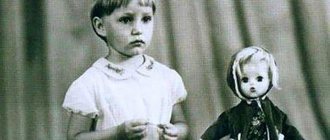Personal life of Catherine 2
The contribution that Catherine 2 made to the development of the Russian Empire, in its approach to European standards, is invaluable. A rich, stormy life with white and black stripes brought history interesting facts and ideas about the ruler. They make films about it, write books and study it in school. But we don’t think that schoolchildren are told what Great Catherine liked to do in her free time from reforms.
Ekaterina, personal life:
At the royal courts, parents practiced giving their princes and princesses to eminent children, and this is what happened with Catherine 2. At the age of 15, she married Peter 3, who was her second cousin. An unsuccessful marriage did not last long, and what years of happiness can we talk about if you do not love each other? After coercion, historians estimate that the ruler had more than 23 men on her list with whom she had close relationships. But more on that later. Catherine 2 had three children. The first-born appeared at the age of 20, from his first husband Peter 3, and was called Pavel Petrovich. Then a son appeared from Orlov, one of the princess’s lovers. They named the boy Alexey Bobrinsky. The third was a girl, but she died of a serious illness at the age of one.
Although the empress had a number of scandalous relationships, historians claim that there was nothing like that in her. She did not like to dress up and remained unspoiled and unpretentious. She was very interested in needlework and wood carving. Moreover, paying a lot of attention to her studies from childhood, the Great composed plays for the court theater. She herself sewed a suit for her beloved grandson Alexander, which was rare for the activities of rulers of that time. But she never had a family, a quiet home talisman. Because of this, she developed a desire to meet and spend time with random chosen ones of the next court evenings. Many historians claim that it became the norm and habit for her to spend time in the company of new fans. The most surprising thing is that she did not hide it at all and calmly reacted to comments from her loved ones. Moreover, she started relationships with everyone, from great emperors to simple guardsmen. By the way, guardsman Grigory Orlov was her favorite on her list.
Childhood and education
Mother of Peter III - Anna Petrovna
Father of Peter III - Karl Friedrich of Holstein-Gottorp
The husband of Catherine II was born in 1728 in the German town of Kiel. They named him Karl Peter Ulrich of Holstein-Gottorp, and from childhood he was supposed to inherit the Swedish throne. In 1742, Elizaveta Alekseevna declared Charles heir to the Russian throne; he remained the only descendant of Peter I the Great. Peter Ulrich arrived in St. Petersburg, where he was baptized and given the name Peter Fedorovich. The procedure took place with great effort, the young heir opposed Orthodoxy and openly declared his dislike for Russia. Upbringing and education were not given any importance; this was reflected in the future views of the emperor.
Tsarevich Peter Fedorovich and Grand Duchess Ekaterina Alekseevna, 1740s G.K. Groot
Portrait of Peter III - Antropov A.P. 1762
The strong-willed, ambitious, fair Russian Empress and her husband were unlucky. The husband of Catherine II was not a worthy person, not very physically and mentally developed. When Peter III and Catherine II first met, she was outraged by his ignorance and lack of education. But the young people had no choice; the future was predetermined by Elizaveta Petrovna. Marriage did not bring Pyotr Fedorovich to his senses; on the contrary, he expanded the range of his amusements and hobbies. He was a man with strange preferences. The emperor could spend hours running around the room with a whip or gathering all the lackeys in order to play soldiers. Pyotr Fedorovich had a genuine interest in military service, but only in a playful way; he had no intention of doing it seriously.
How Catherine 2 lived, true myths about her life
Great merits are great merits, but no one has canceled female pleasure. It seems that Catherine 2 was guided by this very principle and was not particularly ashamed of it. Her list of chosen ones included 23 men of different ranks and origins. They say that fleeting court boys also “ran” to her, but we do not take them into account. To reinforce and add shocking myths to your imagination, check out the 7 main myths about the Empress:
- The son is not the son of Peter . This opinion was primarily held by Peter 3 himself. He believed that Paul was not his own child. A completely reliable fact, since their family nest was more like neighborly relations in a larger palace. That is, neither Peter nor Catherine loved each other. And the appearance of the ruler’s first lover, during Peter’s illness, gave him reason to think that the child was not conceived with him. The first chosen one after the official husband was Sergei Saltykov. As soon as signs of Catherine’s pregnancy appeared, the “friend” was sent abroad as an ambassador.
- 100,000,000 rubles. Can you imagine what a huge amount of money at that time was 1,000,000,000 rubles. Nowadays it will be difficult to find an apartment for them, but then the empress calmly squandered them on her lovers. She built palaces and gave expensive gifts. And not everything would be so sad if not for one BUT. Having presented her chosen ones with surprises and buildings, Catherine left the Russian Empire incredible debts. This amount exceeded the external and internal expenditures of the state many times over. The only question is, what motivated her? But, a personal matter is a personal matter for everyone.
- If you have fun, then outside the city . The legend is not a legend, but there is such a version. Catherine loved to spend Saturday evenings on the outskirts of St. Petersburg and Moscow, in simple taverns. Of course, she did not appear there in the role of a state owner, but disguised herself as a simple Christian. But this is the least likely to be believed, since not a single fact is provided.
- Plywood table . Nothing like that, right? If it were not for the presence of male genital organs on it. But what about the presence, the entire table rests on men’s intimate parts, and women’s curly breasts add fuel to the fire. At an auction in 2020, it was sold for $25,000, claiming that it was in one of the lustful rooms of the royal palace of Catherine II. Marketing ploy or truth? - both versions are quite plausible.
- Anecdote with a horse . In our opinion, this is the same fable that was invented to reinforce the status of the dissolute queen. The bottom line: Catherine 2 died immediately after sexual contact with a stallion from the royal stable, from rupture of internal organs. But to believe in such unsupported speculation is a lack of logic. Why would Catherine do this with a horse if she had more than 100 fleeting and serious relationships among her fans. Although the story has developed into a funny story that defiles the entire position of the queen.
- Let's go back to the table . Not everything is so simple with him either, because they claim that he was located in an unusual room in the royal palace. It was equipped with various intimate toys of the time, and had strange, exciting designs and pieces of furniture. By the way, this myth turns into truth after the film by the Belgian director Vodic “The Secret of Catherine the Great.” He collected facts, looked for evidence of the existence of an entertainment facility, and soon revealed them in his film.
- Letters . Modern SMS about declarations of love from young people are nothing compared to the memoirs that emperors and empresses wrote to each other. They even kept personal diaries, where they described all the feelings during solitude with their partner. It is not difficult to understand that Catherine also had such a notebook; whether it was found or not is unknown, but the myth circulates non-stop across the Internet.
Myth about the horse
Date of death of Catherine 2 – November 17, 1796. The Empress died at the age of 67. There is a myth that a woman allegedly died because of an animal, namely a horse. It must be said right away that the death of Catherine second from the horse is a version that does not bear any official or documentary evidence.
Rumor has it that the empress had quite unusual intimate desires. She dreamed of having sexual intercourse with a horse. But this experience was unsuccessful, resulting in her death. This is an unusual myth that originated on French soil. The state was very negatively disposed towards Rus'. For this reason, the tale was invented that Catherine died under a horse.
People have always liked interesting stories. Especially if they relate directly to famous personalities. The majority of the population is ready to believe in outright slander, without even analyzing the situation, without thinking about its logic and subtleties.
The exploits and death of Catherine the Great
Adventures are adventures, but the contribution the Empress made to the development of the Russian Empire obscures all her debauchery. She carried out administrative and judicial reforms and significantly expanded the borders of Russia. Built 144 cities and 29 provinces. She brought the Russian Empire to the largest country in Europe and saved the aristocrats from smallpox by inoculating herself experimentally. Of course, this is not the entire list of her exploits before Russia. The only thing was that the situation within the state did not particularly please the peasants. Their rights were significantly infringed, it strengthened the bureaucracy and autocracy, exploited and enslaved serfs and urban residents.
There are several versions of why Catherine the Great died, but the main and plausible cause of death is excess weight. Joints, blood clots and aneurysms took the life of the ruler of the Russian Empire.
Should we condemn her for the licentiousness and shameful position of the Russian Empire? – we don’t think so. Everyone leads their own lifestyle the way they want. Perhaps it was intimate relationships that helped her relax after making difficult government decisions and royal affairs. Or maybe it was the only pleasure and at the same time pain in her life.
Support us - the only source of reason in these difficult times
Murder hypothesis
Historians are considering their own version of why Catherine 2 died. They are inclined to believe that her death could have been violent and prepared by her son, who later became Emperor Paul I. There is no direct evidence of this, but by analyzing the chronology of events of that time, we can make an assumption about the reality of all these suspicions. Historians have established that there was a difficult relationship between Catherine and her son. The reason for this was the sending of Paul to Gatchina after he turned eighteen years old. His mother pushed him away from ruling the Russian Empire.
In addition, Paul considered the empress the murderer of his father. In the last years of her life, Catherine 2 considered the option of transferring the throne to her grandson, whom she raised. Therefore, Paul may have had a motive to kill his mother. In addition, while the empress was dying, Pavel studied documentation in a separate office, according to many assumptions, in order to destroy his mother’s will.
Tomb of Catherine II
In the tomb of the Peter and Paul Fortress you can see the grave of the Empress. It is located next to the sarcophagus of her husband Peter III. This was required by the rules of decency, because she was his official wife. Although there are rumors that she was secretly married to Grigory Potemkin. The tombstone does not indicate the date of birth and year of death of Catherine the Great. On the white marble sarcophagus there are gilded coats of arms in the corners, and an Orthodox cross in the middle.
Development of legislative acts
After the Russian-Turkish war, which lasted from 1768 to 1774, ended, and Pugachev’s uprising was suppressed, a new stage of Catherine’s reforms began. The Empress herself began to develop the most important legislative acts. In particular, a manifesto was issued in 1775, according to which it was allowed to establish any industrial enterprises without restrictions. Also this year, a provincial reform was carried out, as a result of which a new administrative division of the empire was established. It survived until 1917.
Expanding on the topic “Brief biography of Catherine the Great,” we note that the Empress issued the most important legislative acts in 1785. These were letters of grant to cities and nobility. A letter was also prepared for state peasants, but political circumstances did not allow it to be put into effect. The main significance of these letters was associated with the implementation of the main goal of Catherine’s reforms - the creation of full-fledged estates in the empire on the model of Western Europe. The diploma meant for the Russian nobility the legal consolidation of almost all the privileges and rights that they had.
The influence of favorites on state affairs
According to other historical data, the Empress gave birth to a boy and a girl from Poniatowski, but these children of Catherine the Great lived only about sixteen months. They were never publicly acknowledged. Most of Catherine the Great's favorites came from noble families and managed to build an outstanding political career. For example, Stanisław Poniatowski became King of Poland in 1764.
But none of Catherine’s lovers used their status enough to influence public policy. With the exception of Grigory Potemkin, with whom Catherine the Great had very deep feelings. Many experts even claim that a secret marriage took place between the Empress and Potemkin in 1774.
Catherine the Great, whose years of reign brought significant benefits to the Russian state, remained a loving and beloved woman throughout her life.
Main services to the Russian state
And although love was an important part of Catherine’s life, feelings never overshadowed political interests. The Empress always worked hard to master the Russian language to the point of completely eliminating her accent, absorbed Russian culture and customs, and meticulously studied the history of the empire. The historical portrait of Catherine the Great indicates that she was a very competent ruler.
During her reign, Catherine expanded the borders of the Russian Empire to the south and west by almost 520,000 square kilometers. The state became the dominant force in southeastern Europe. Numerous victories on the military front allowed the empire to gain access to the Black Sea.
Moreover, in 1768, the Bank of Assignation was entrusted with the task of issuing the first government paper money. Similar institutions opened in St. Petersburg and Moscow, and then bank branches were created in other cities.
Catherine paid great attention to the education and upbringing of young people of both sexes. The Moscow Orphanage was opened, and soon the empress established the Smolny Institute for Noble Maidens. She studied educational theories in the practice of other countries and initiated many educational reforms. And it was Catherine who laid down the commitment to open schools in the provincial parts of the Russian Empire.
The Empress constantly patronized the cultural life of the country, and also demonstrated devotion to the Orthodox faith and the state. She paid maximum attention to expanding educational institutions and increasing the economic power of the country. But who ruled after Catherine the Great? Who continued her path in the development of the state?
Different versions of death
All rumors are born for one reason or another. They are also connected with Catherine II. After all, how Catherine the Great died was of interest to everyone not only in Russia, but also in Europe.
The empress's promiscuity and the favoritism generated by this contributed to the emergence of a rumor about Catherine's bestiality, which led to her death. Of course, this is nonsense. In patriarchal Russia, such behavior of the empress and her court caused a negative reaction.
The fact that the queen had an attack in the toilet doesn’t mean anything either. A person can die anywhere, since he is not free to choose the place where to give his soul. But there is still something derogatory about it. Great, but she died in the toilet - this is just a reason to be sarcastic, since the queen died in her own bed.
There is another mystical version that Catherine saw her ghost on the throne and ordered him to be killed, and after some time she died. A reasonable person will not believe all this. But there is one rumor that was confirmed by some of her relatives. Two days before her death, she saw a star falling from the sky, which made a strong impression on her. She was dejected and said that this was not good. A person always anticipates his departure to another world.
Events of the last two days
It is known that the day before her death, the empress attended an important state reception. According to the recollections of contemporaries, on this day the empress, glancing at the starry sky, saw a falling star. Catherine 2 stated that this was a bad omen, but remained externally calm and did not show that she was upset or upset.
On the morning of November 6, Catherine the Second, after her usual morning coffee, went to the toilet. After some time, the courtiers discovered that the empress did not come out and did not respond to the call. The frightened valet entered the “holy of holies” - the empress’s dressing room - and saw a terrible picture. The Empress lay unconscious on the floor. When she fell, she hit her head hard. Further events developed as follows:
- the courtiers tried to raise the queen's body, but were unable to do so;
- the lifeless empress was somehow placed on a large mattress;
- the queen's entourage sent for a doctor and a priest;
- the doctor made an attempt to bleed Catherine, but it was already useless.
The priest only had to read a prayer for the departure of the soul from the body. It was not possible to administer Holy Communion and Unction to the Empress because she was unconscious.
The childhood of the future great empress
Catherine the Second, born Sophia Frederike Auguste, was born on April 21, 1729 in the small German principality of Stettin, Prussia (now Szczecin, Poland). Her father, Christian August of Anhalt-Zerbst, was the prince of this tiny domain. He made a military career under Frederick William the First.
Catherine's mother is Princess Elisabeth of Holstein-Gottorp. The girl's parents really hoped for an heir, and therefore did not show much affection for their daughter. Instead, they devoted most of their time and energy to their son Wilhelm, who sadly later died at the age of twelve.











